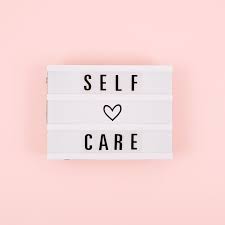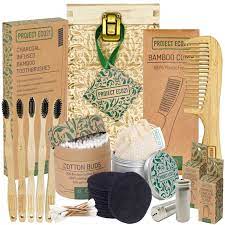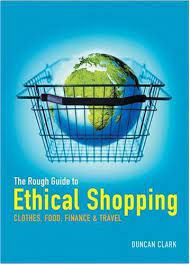Elegance Redefined: Embracing Sustainable Luxury
Sustainable Luxury: Balancing Elegance and Responsibility
Luxury has long been associated with opulence, excess, and indulgence. However, in today’s world where environmental concerns are at the forefront of our minds, a new concept is emerging – sustainable luxury. This innovative approach seeks to combine the best of both worlds: the elegance and refinement of luxury goods and experiences, with a responsible and ethical mindset.
So, what exactly is sustainable luxury? It goes beyond merely using eco-friendly materials or implementing green practices. Sustainable luxury encompasses a holistic approach that considers the entire lifecycle of a product or service, from its creation to its disposal. It strives to minimize environmental impact while also promoting social responsibility.
One key aspect of sustainable luxury is the use of ethically sourced materials. This means selecting materials that are responsibly harvested or recycled, ensuring that no harm is done to ecosystems or communities during their extraction or production. For example, luxury fashion brands are increasingly turning to organic cotton, recycled fabrics, and innovative alternatives like vegan leather to reduce their reliance on harmful practices.
Furthermore, sustainable luxury places great emphasis on fair trade and ethical production processes. It seeks to ensure that workers involved in creating these luxurious products are treated fairly, paid a living wage, and provided with safe working conditions. By supporting brands that prioritize these values, consumers can contribute to positive change in industries notorious for exploitation.
In addition to materials and production methods, sustainable luxury also considers the longevity of products. Instead of encouraging disposable consumption habits prevalent in fast fashion or throwaway culture, it promotes timeless designs and quality craftsmanship that stand the test of time. By investing in durable pieces that transcend trends, consumers can reduce waste while enjoying luxurious items for years to come.
Sustainable luxury doesn’t stop at physical products; it extends into experiences as well. Eco-friendly resorts offering unique and immersive travel experiences have gained popularity among conscious travelers seeking both comfort and sustainability. These destinations prioritize conservation, energy efficiency, and local community engagement, allowing guests to indulge in luxury while leaving a positive impact on the environment and supporting local economies.
The rise of sustainable luxury is not just a passing trend; it is a necessary response to the challenges our world faces. By redefining luxury to include responsibility and accountability, we can ensure that future generations can enjoy the finer things in life without compromising the planet’s well-being.
As consumers, we hold immense power in shaping industries. By choosing sustainable luxury options, we can drive positive change and encourage brands to adopt more ethical practices. Together, let us embrace this new era of elegance and responsibility – where luxury becomes a force for good in our world.
7 Tips for Embracing Sustainable Luxury: Making Conscious Choices for a Stylish and Eco-Friendly Wardrobe
- Invest in timeless pieces that will last for years to come.
- Choose sustainable materials such as organic cotton, hemp, bamboo, or recycled fabrics.
- Shop from brands that are transparent about their production processes and materials used.
- Research the company’s sustainability practices before making a purchase – look for certifications like Fairtrade or OEKO-TEX Standard 100.
- Buy pre-owned luxury items when possible – this reduces waste and supports the circular economy of fashion consumption.
- Avoid fast fashion and disposable trends; opt for quality over quantity when shopping for luxury items instead!
- Consider renting designer pieces rather than buying them outright – this way you can enjoy the latest trends without contributing to wasteful production cycles!
Invest in timeless pieces that will last for years to come.
Investing in Timeless Pieces: A Sustainable Approach to Luxury
In a world of fast fashion and fleeting trends, the concept of timeless pieces holds great value, both in terms of style and sustainability. When it comes to luxury, opting for items that will stand the test of time is not only a wise fashion choice but also an environmentally conscious decision.
The allure of timeless pieces lies in their ability to transcend passing fads and remain relevant year after year. These are the garments, accessories, or even furniture items that exude elegance and sophistication, regardless of changing trends. By investing in such items, you can build a wardrobe or collection that lasts for years to come.
But what makes these pieces sustainable? Firstly, their longevity directly reduces the need for constant consumption. Instead of constantly chasing new fashion trends or replacing worn-out items, timeless pieces can be cherished and enjoyed for extended periods. This reduces waste and lessens the strain on natural resources.
Moreover, timeless designs often prioritize quality craftsmanship and durable materials. They are built to withstand wear and tear, ensuring that they remain intact even with regular use. This contrasts with fast fashion’s disposable nature, where poorly made garments quickly fall apart and end up in landfills.
By choosing timeless luxury items, you also contribute to a more ethical industry. Many luxury brands that focus on longevity also emphasize fair trade practices and ethical sourcing of materials. This means that not only are you investing in enduring style but also supporting responsible production processes that prioritize worker rights and environmental stewardship.
When it comes to fashion specifically, timeless pieces offer endless versatility. They can be easily combined with other wardrobe staples or mixed with trendier elements to create unique looks. This versatility allows you to curate a personal style that reflects your individuality while reducing the need for excessive consumption.
Lastly, investing in timeless luxury is a statement against the culture of disposability prevalent in today’s society. It encourages us to appreciate craftsmanship, value quality over quantity, and embrace a more sustainable mindset. By consciously choosing pieces that will endure, we can minimize our impact on the environment and inspire others to do the same.
In conclusion, investing in timeless pieces is not just a fashion choice; it is a sustainable approach to luxury. By selecting items that will last for years to come, we reduce waste, support ethical practices, and cultivate a personal style that stands apart from fleeting trends. So, let us embrace the charm of timeless elegance and contribute to a more sustainable future.
Choose sustainable materials such as organic cotton, hemp, bamboo, or recycled fabrics.
Choosing Sustainable Materials: A Step Towards Responsible Luxury
In the pursuit of sustainable luxury, one of the most impactful choices we can make is selecting products made from sustainable materials. By opting for materials such as organic cotton, hemp, bamboo, or recycled fabrics, we can enjoy luxurious items while minimizing our environmental footprint.
Organic cotton is a prime example of a sustainable material. Unlike conventional cotton farming that relies heavily on pesticides and synthetic fertilizers, organic cotton is grown using natural methods that prioritize soil health and biodiversity. By choosing products made from organic cotton, we support farmers who adopt eco-friendly practices and protect both the environment and workers’ well-being.
Hemp is another versatile and sustainable material gaining popularity in the luxury industry. It requires minimal water and pesticides to grow, making it an excellent alternative to conventional textiles. Hemp fabric is durable and breathable, offering both comfort and style. With its ability to be transformed into various luxurious products like clothing, accessories, and even home furnishings, hemp presents a sustainable option for those seeking responsible luxury.
Bamboo is yet another remarkable choice when it comes to sustainable materials. It grows rapidly without the need for chemical fertilizers or pesticides. Bamboo fabric has natural antibacterial properties and excellent moisture-wicking capabilities, making it ideal for clothing items such as activewear or luxurious bedding.
Recycled fabrics are an innovative solution to reduce waste in the fashion industry. By repurposing post-consumer waste or pre-consumer textile scraps into new fabrics, we can divert materials from landfills and conserve valuable resources. From recycled polyester to upcycled denim or even regenerated nylon (ECONYL), these fabrics offer endless possibilities for creating luxurious products with a reduced environmental impact.
Making conscious choices about the materials we surround ourselves with allows us to align our desire for luxury with responsible consumption. By selecting items made from sustainable materials like organic cotton, hemp, bamboo, or recycled fabrics, we contribute to a more sustainable future while enjoying the elegance and refinement we desire.
As consumers, we have the power to drive change. By demanding sustainable materials and supporting brands that prioritize eco-friendly practices, we can encourage the luxury industry to embrace responsible production methods. So, let’s make a difference by choosing sustainable materials and indulging in luxurious items that not only enhance our lives but also protect our planet for generations to come.
Shop from brands that are transparent about their production processes and materials used.
Shop Smart: Embrace Transparency in Sustainable Luxury
In a world where conscious consumerism is gaining momentum, it’s essential to make informed choices when it comes to luxury purchases. One crucial tip for embracing sustainable luxury is to shop from brands that are transparent about their production processes and materials used.
Transparency is the cornerstone of responsible and ethical practices. Brands that are open and honest about their production methods, supply chains, and sourcing of materials demonstrate a commitment to sustainability. By providing this information, they empower consumers to make informed decisions and support brands that align with their values.
When shopping for sustainable luxury, look for brands that openly share details about their manufacturing processes. This includes information about the factories or artisans involved in production, ensuring fair wages and safe working conditions. Transparent brands also provide insights into the steps taken to minimize environmental impact, such as reducing waste or implementing renewable energy sources.
Equally important is understanding the materials used in luxury products. Sustainable brands prioritize eco-friendly materials that are responsibly sourced or recycled. They may use organic cotton, hemp, or innovative alternatives like recycled plastics or plant-based leathers. By being transparent about material choices, these brands allow consumers to assess the environmental impact of their purchases.
Transparency extends beyond just words on a website; it should be backed up by certifications and third-party verifications. Look out for labels such as Fair Trade, GOTS (Global Organic Textile Standard), or B Corp certification – these indicate a brand’s commitment to social and environmental responsibility.
By supporting transparent brands, you not only contribute to sustainable practices but also send a powerful message to the industry as a whole. Your purchasing power encourages other luxury brands to follow suit and adopt more responsible approaches.
Remember, shopping sustainably doesn’t mean compromising on style or quality. Many sustainable luxury brands offer exquisite craftsmanship, timeless designs, and luxurious experiences while prioritizing ethical practices. By choosing transparency as your guiding principle when making purchasing decisions, you can enjoy the best of both worlds – indulging in luxury while contributing to a more sustainable future.
So, the next time you’re on the hunt for that perfect luxury item, take a moment to research and choose brands that are transparent about their production processes and materials used. Your conscious choice can make a significant impact on the industry and pave the way for a more responsible and sustainable approach to luxury.
Research the company’s sustainability practices before making a purchase – look for certifications like Fairtrade or OEKO-TEX Standard 100.
When it comes to embracing sustainable luxury, one important tip to keep in mind is to research a company’s sustainability practices before making a purchase. In today’s world, where greenwashing is prevalent, it’s crucial to look beyond marketing claims and delve deeper into a brand’s commitment to sustainability.
One way to assess a company’s environmental and social responsibility is by checking for certifications such as Fairtrade or OEKO-TEX Standard 100. These certifications provide valuable insights into a brand’s practices and their impact on people and the planet.
The Fairtrade certification ensures that producers in developing countries receive fair compensation for their work, promoting sustainable livelihoods and empowering communities. By purchasing products with this certification, you can support ethical supply chains and contribute to the well-being of workers around the world.
On the other hand, the OEKO-TEX Standard 100 certification focuses on textile products. It guarantees that these items have been tested for harmful substances, ensuring they are safe for both consumers and the environment. This certification indicates that a company takes responsible manufacturing seriously and prioritizes the health of its customers.
By researching a company’s sustainability practices and looking for certifications like Fairtrade or OEKO-TEX Standard 100, you can make informed choices as a consumer. Supporting brands that prioritize transparency and ethical practices not only encourages responsible business behavior but also helps drive positive change within industries.
Remember, your purchasing power has the potential to shape industries towards more sustainable practices. So take a moment before making your next luxury purchase to investigate a brand’s sustainability efforts. By doing so, you can align your values with your shopping decisions and contribute towards creating a more sustainable future while indulging in the elegance of sustainable luxury.
Buy pre-owned luxury items when possible – this reduces waste and supports the circular economy of fashion consumption.
Embracing Sustainable Luxury: The Power of Pre-Owned
In the world of luxury fashion, trends come and go, but one concept that stands the test of time is sustainability. As we become more aware of the environmental impact of our consumption habits, a simple yet powerful tip emerges: buy pre-owned luxury items whenever possible. Not only does this practice reduce waste, but it also supports the circular economy of fashion consumption.
When we think about luxury fashion, we often envision brand-new items straight from the boutique. However, there is an entire world of pre-owned luxury waiting to be explored. Buying pre-owned allows us to give new life to beautiful pieces that have already been enjoyed by someone else. It’s a win-win situation – we get to indulge in luxurious items while minimizing our carbon footprint.
By choosing pre-owned luxury goods, we actively participate in reducing waste. Fashion is notorious for its environmental impact, from excessive water usage to toxic chemical dyes and textile waste filling up landfills. By opting for pre-owned items, we extend their lifespan and prevent them from becoming part of this growing problem.
Moreover, buying pre-owned supports the circular economy within the fashion industry. Instead of perpetuating a linear model where resources are extracted, products are made, consumed briefly, and then discarded, we embrace a more sustainable approach. Pre-owned luxury items become part of a cycle where they can be resold and re-enjoyed by others, minimizing the need for new production.
The benefits go beyond environmental considerations – buying pre-owned luxury can also be financially rewarding. Luxury items often retain their value well over time, making them excellent investment pieces. By purchasing pre-owned goods at a lower price point than their original retail value, we can enjoy high-quality craftsmanship without breaking the bank.
So how can you start incorporating pre-owned luxury into your shopping habits? Explore dedicated online platforms or consignment stores that specialize in authenticated second-hand luxury items. These platforms curate a selection of pre-owned pieces, ensuring their authenticity and quality. With a little research and patience, you can find hidden gems waiting to be discovered.
When it comes to sustainable luxury, buying pre-owned is a small but impactful step towards a more responsible and conscious fashion industry. By reducing waste and supporting the circular economy, we can enjoy the elegance of luxury while contributing to a better world. Let’s embrace the power of pre-owned and make sustainable choices that align with our values.
Avoid fast fashion and disposable trends; opt for quality over quantity when shopping for luxury items instead!
Embracing Sustainable Luxury: Quality Over Quantity
In a world where fast fashion dominates the market, it’s essential to pause and consider the impact of our purchasing decisions. When it comes to luxury items, opting for quality over quantity is a simple yet powerful way to embrace sustainable luxury.
The allure of disposable trends can be tempting, but the true essence of luxury lies in timeless elegance and enduring craftsmanship. By investing in high-quality pieces that are built to last, we not only elevate our personal style but also contribute to a more sustainable future.
Fast fashion encourages a culture of throwaway consumption, where garments are produced rapidly and inexpensively, often at the expense of ethical production practices and environmental considerations. By avoiding this cycle and choosing luxury items that prioritize longevity, we can break free from the cycle of constant buying and discarding.
When shopping for luxury items, consider the materials used. Look for natural fibers like organic cotton or sustainably sourced silk that have a lower environmental impact compared to synthetic alternatives. Pay attention to details like stitching, finishes, and construction techniques – these factors contribute to durability and longevity.
By investing in quality over quantity, we reduce waste and minimize our carbon footprint. Instead of constantly replacing cheaply made items that quickly lose their appeal or fall apart after a few wears, we can build a curated collection of luxurious pieces that stand the test of time.
Moreover, choosing quality over quantity supports artisans and craftsmen who pour their skills into creating exquisite products. By valuing their expertise and craftsmanship, we help preserve traditional techniques that have been passed down through generations.
Sustainable luxury is about making conscious choices that align with our values. It’s about finding joy in owning fewer items but cherishing each one for its exceptional quality and timeless beauty. By opting for quality over quantity when shopping for luxury goods, we contribute to a more sustainable future while enjoying the true essence of luxury – elegance that endures beyond passing trends.
So, let’s embrace sustainable luxury, one thoughtful purchase at a time. Together, we can redefine what it means to indulge in the finer things in life while also being mindful of our planet and the people behind these exquisite creations.
Consider renting designer pieces rather than buying them outright – this way you can enjoy the latest trends without contributing to wasteful production cycles!
Embracing Sustainable Luxury: Renting Designer Pieces for a Stylish, Responsible Choice
In the world of fashion, keeping up with the latest trends can often come at a cost – both to our wallets and to the environment. However, there is a sustainable solution that allows us to indulge in luxury without adding to wasteful production cycles: renting designer pieces.
Renting designer fashion has gained popularity as a conscious alternative to buying outright. This innovative concept allows fashion enthusiasts to enjoy the latest styles and designs without the guilt of contributing to excessive consumption or wasteful manufacturing processes.
By opting to rent, you have access to a wide range of high-end garments and accessories for special occasions or everyday wear. Whether it’s a glamorous evening gown, a chic handbag, or statement jewellery, renting offers an affordable way to elevate your style while reducing your carbon footprint.
One of the key benefits of renting designer pieces is that it promotes circular fashion – the idea of extending the lifecycle of garments and reducing waste. Instead of purchasing an item that may only be worn once or twice before being forgotten in our closets, renting allows us to share these coveted pieces with others who can also enjoy them. It’s a win-win situation where we get to experience luxury while minimizing our impact on the environment.
Moreover, renting designer fashion reduces the demand for new production. The fashion industry is notorious for its resource-intensive processes and harmful environmental practices. By choosing rental options, we are actively discouraging excessive manufacturing and helping curb unnecessary waste generation.
Renting also provides an opportunity for experimentation and exploration. It allows us to step out of our comfort zones and try different styles without committing to long-term ownership. This flexibility encourages creativity in our personal style choices while avoiding impulse purchases that may later contribute to clutter.
In recent years, numerous online platforms have emerged offering convenient rental services for designer fashion. These platforms provide easy access, hassle-free delivery, and professional cleaning services, ensuring that each rental item is in pristine condition for every customer.
So, the next time you find yourself yearning for that stunning designer piece, consider renting it instead of buying. Not only will you enjoy the latest trends and luxurious styles, but you’ll also be making a responsible choice that aligns with sustainable fashion principles.
Let’s redefine luxury by embracing a more conscious approach to our fashion choices. Renting designer pieces allows us to indulge in elegance while contributing to a more sustainable future – where style and responsibility go hand in hand.









